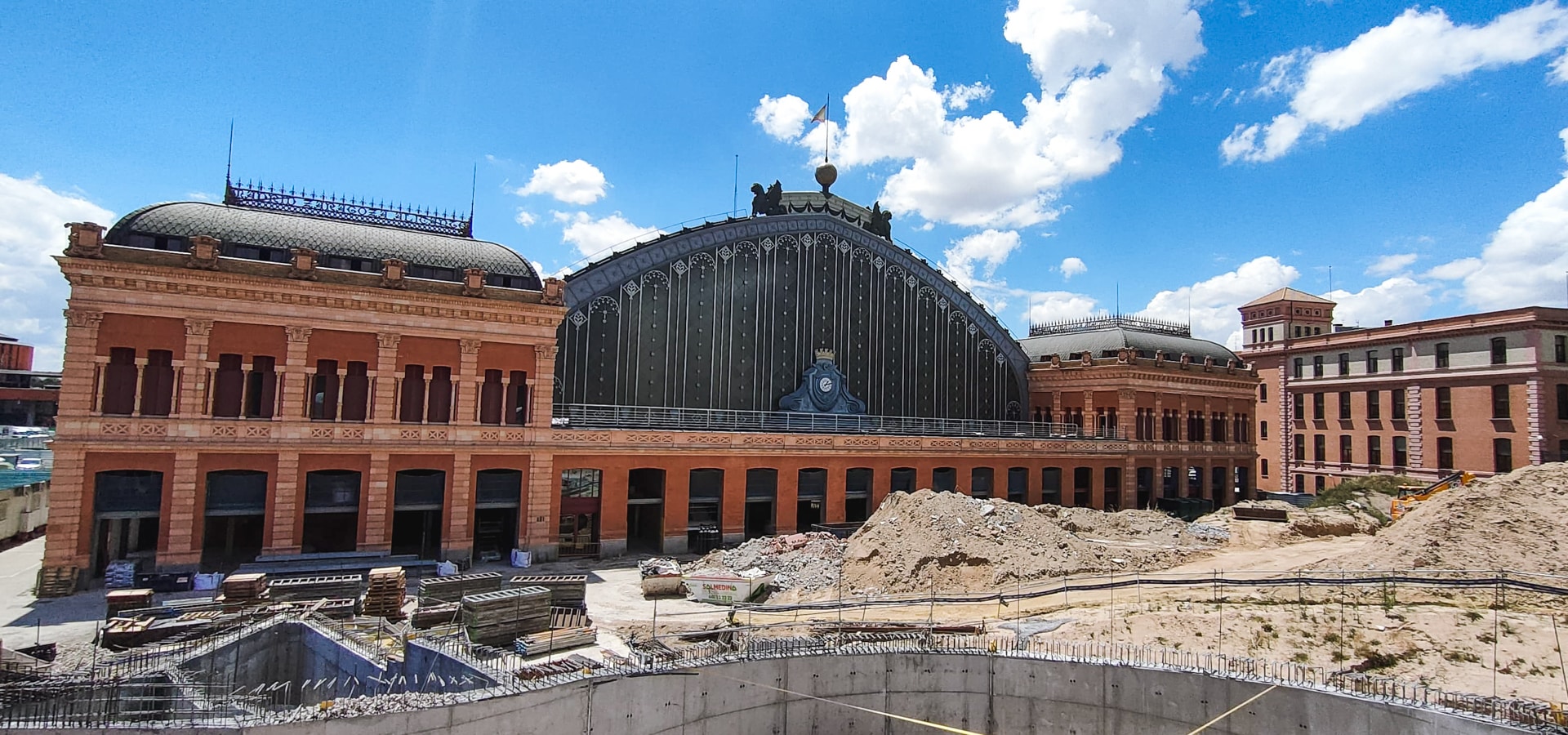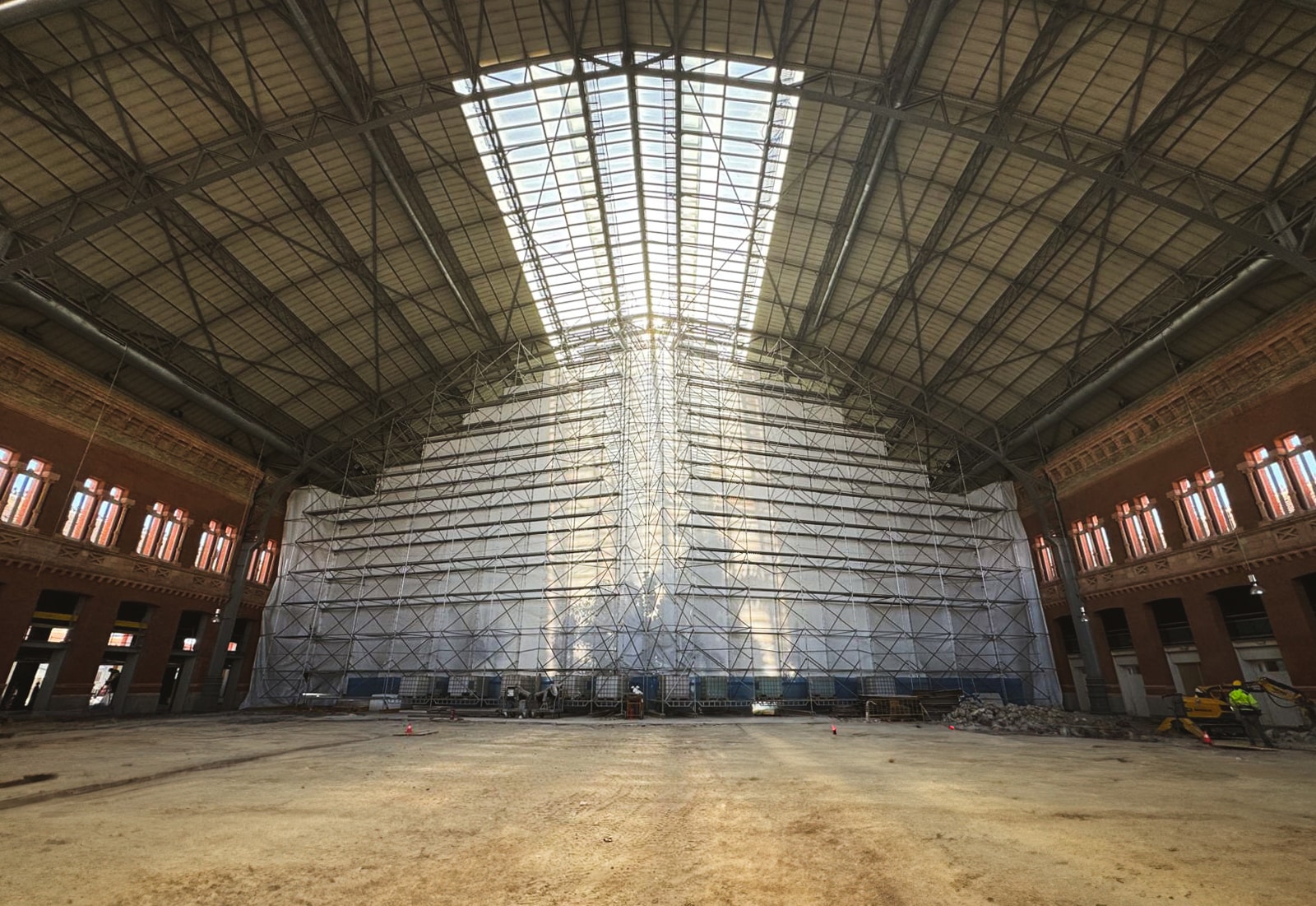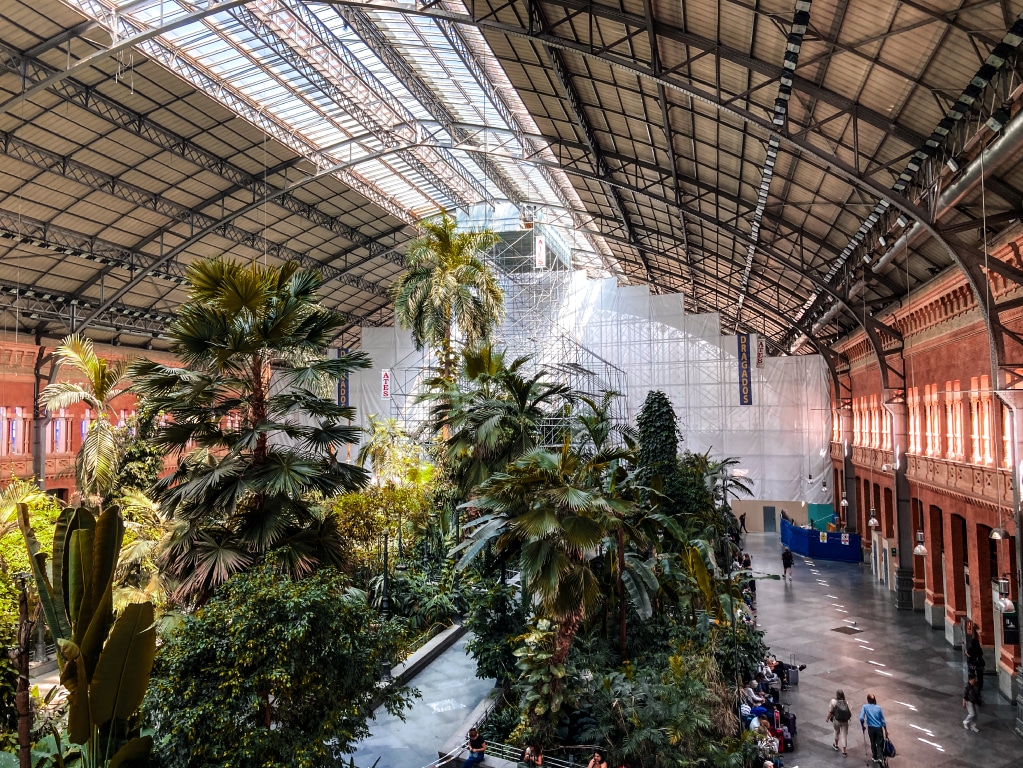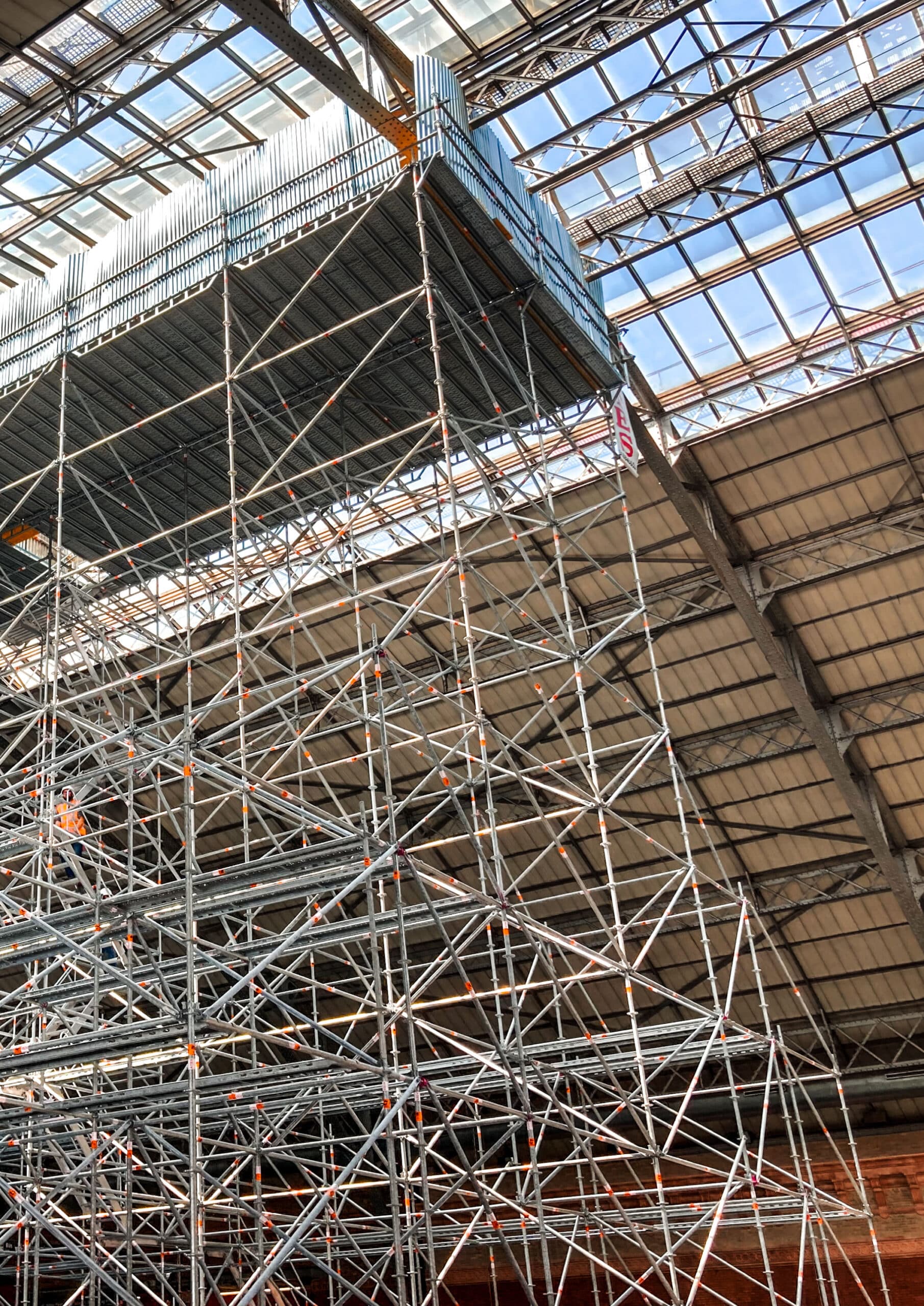Rehabilitation of Atocha Station in Madrid
Solutions for an iconic project arise from the collaboration between Ates and Catari.

The historic Atocha Station, located in Madrid, Spain, is undergoing significant rehabilitation thanks to the joint efforts of Ates and Catari.
Recognized as one of Europe’s largest railway centres and the busiest in Spain, the station is continuously evolving to meet the needs of its users.
As part of this project, Ates installed a total of three Catari US® scaffolding structures, two of which were dedicated to the structural reinforcement of the station’s upper beams. The design and assembly of these work platforms not only had to consider complex structural aspects but also the safety of the thousands of passengers who pass through the station daily.
The scaffolding solution involved supporting central beams to create an upper work platform, ensuring a safe working environment for the workers and a secure passage area on the ground for the users.
In addition to these two main platforms, Ates installed a third self-supporting scaffolding structure, designed to hold a micro-perforated tarp that covers the ongoing work.




The collaboration between Ates and Catari was crucial to the success of this initiative. Catari, through its team in Spain, provided innovative technical solutions, detailed designs, project and structural calculations. The use of multidirectional scaffolding allowed the creation of safe and efficient work platforms, perfectly adapting to the specific needs of the Atocha project.
This project not only stands out for its scale, but also for the commitment of both companies, to offer innovative solutions that ensure quality and safety at all stages of Atocha Station’s rehabilitation.
Miguel Ortego
Delegate of the central zone of AtesCatari US®: The scaffolding solution for high-complexity projects
Certified according to European standards for scaffolding, the system provides enhanced safety for workers during its assembly and use.
The design is based on the rosette coupling system. Welded on verticals every 50 cm, the rosettes have special openings that can accommodate up to eight other components through wedge terminals. These terminals are found at the end of the system components and fit precisely, ensuring rigid connections with high load capacities – ideal for large-scale projects requiring high safety standards.
Complementing the product’s intrinsic characteristics, the preparation of a 3D project was also very useful, allowing for the automatic determination of the necessary materials and preventing potential on-site difficulties during scaffolding assembly.
Interview with Miguel Ortego
Delegate of the central zone of Ates